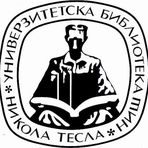Title
Interaktivna identifikacija evropskih vrsta egzofitofagnih gusenica kroz upravljanje deskriptivnim podacima
Creator
Trajković, Aleksandra, 1996-
CONOR:
65677577
Copyright date
2024
Object Links
Select license
Autorstvo-Nekomercijalno-Bez prerade 3.0 Srbija (CC BY-NC-ND 3.0)
License description
Dozvoljavate samo preuzimanje i distribuciju dela, ako/dok se pravilno naznačava ime autora, bez ikakvih promena dela i bez prava komercijalnog korišćenja dela. Ova licenca je najstroža CC licenca. Osnovni opis Licence: http://creativecommons.org/licenses/by-nc-nd/3.0/rs/deed.sr_LATN. Sadržaj ugovora u celini: http://creativecommons.org/licenses/by-nc-nd/3.0/rs/legalcode.sr-Latn
Language
Serbian
Cobiss-ID
Theses Type
Doktorska disertacija
description
Datum odbrane: 12.04.2025.
Other responsibilities
Academic Expertise
Prirodno-matematičke nauke
Academic Title
-
University
Univerzitet u Nišu
Faculty
Prirodno-matematički fakultet
Group
Odsek za biologiju i ekologiju
Alternative title
Interactive identification of European exophytophagous caterpillars through descriptive data management
Publisher
[A. D. Trajković]
Format
139 listova
description
Biografija autora: list 135.
Bibliografija: listovi 108-130.
description
Entomology
Abstract (en)
The growing use of computer vision and deep learning for species identification has significantly sped up the collection of biodiversity data worldwide, including data on the diverse morphological and ecological group of exophytophagous caterpillars. While mobile apps are increasingly replacing extensive conceptual literature and are widely used in both scientific and professional circles, as well as by the public, they often miss a crucial aspect of fully understanding a taxon: the biology and ecology of a species as an entity functioning within a complex system of biotic and abiotic factors. This dissertation explores a somewhat opposing question: do new technologies compromise, or do they enhance, traditional species treatments at the trait level?
In this work, species identification is approached as a multidimensional concept that relies not only on biological traits but also on how these traits are interpreted through cognitive processes. Three trait data matrices were developed, containing standardized morphological, ecological, and behavioral descriptors for selected species. Each species set, and each matrix, serves to demonstrate, accurately quantify, and prepare data for statistical analysis—whether addressing polymorphisms and polyphenisms within the Lepidoptera order, the relationship between habitat and habitus, or the use of expert systems in species identification.
The goal of the dissertation is to show that visual signals and contextual information used in the identification process can be further refined through a combination of manual and semi-automatic approaches to gathering and processing descriptive data, the use of crisp and fuzzy coding for descriptors, managing variability at multiple levels, and selecting appropriate categorical counterparts for predictive models. Ultimately, the standardized and refined data were used to create an interactive web application that, through a filtering system, enables species identification and links each taxon to its role within the ecosystem.
Authors Key words
gusenice, identifikacija u biologiji, Lepidoptera, matrice osobina, polimorfizam, polifenizam, prediktivni modeli, fuzzy i crisp kodiranje
Authors Key words
caterpillars, fuzzy and crisp coding, identification in biology, Lepidoptera, polymorphism, polyphenism, predictive models, trait matrices
Classification
595.78:001.103(043.3)
Subject
B250; B320
Type
Tekst
Abstract (en)
The growing use of computer vision and deep learning for species identification has significantly sped up the collection of biodiversity data worldwide, including data on the diverse morphological and ecological group of exophytophagous caterpillars. While mobile apps are increasingly replacing extensive conceptual literature and are widely used in both scientific and professional circles, as well as by the public, they often miss a crucial aspect of fully understanding a taxon: the biology and ecology of a species as an entity functioning within a complex system of biotic and abiotic factors. This dissertation explores a somewhat opposing question: do new technologies compromise, or do they enhance, traditional species treatments at the trait level?
In this work, species identification is approached as a multidimensional concept that relies not only on biological traits but also on how these traits are interpreted through cognitive processes. Three trait data matrices were developed, containing standardized morphological, ecological, and behavioral descriptors for selected species. Each species set, and each matrix, serves to demonstrate, accurately quantify, and prepare data for statistical analysis—whether addressing polymorphisms and polyphenisms within the Lepidoptera order, the relationship between habitat and habitus, or the use of expert systems in species identification.
The goal of the dissertation is to show that visual signals and contextual information used in the identification process can be further refined through a combination of manual and semi-automatic approaches to gathering and processing descriptive data, the use of crisp and fuzzy coding for descriptors, managing variability at multiple levels, and selecting appropriate categorical counterparts for predictive models. Ultimately, the standardized and refined data were used to create an interactive web application that, through a filtering system, enables species identification and links each taxon to its role within the ecosystem.
“Data exchange” service offers individual users metadata transfer in several different formats. Citation formats are offered for transfers in texts as for the transfer into internet pages. Citation formats include permanent links that guarantee access to cited sources. For use are commonly structured metadata schemes : Dublin Core xml and ETUB-MS xml, local adaptation of international ETD-MS scheme intended for use in academic documents.


